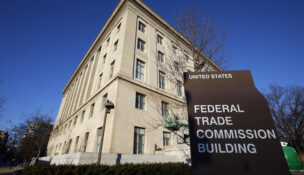Duty Case Analysis
By: dmc-admin//June 21, 2006//
Although the opinion affirms the court of appeals’ decision, it does so on different grounds, and the difference is not an improvement in the law.
The majority rejects the dissent’s contention that it has confused the law concerning duty in Wisconsin, but the dissent’s contention is on very solid ground.
The majority wrote in a footnote, “the majority opinion clearly concludes that M&I and McDonald Title have a duty to exercise ordinary care under the circumstances.
What the majority opinion turns on is whether the circumstances of this case require M&I and McDonald Title to undertake all the affirmative acts that Hoida requests.”
What the majority opinion ignores is that breach of duty, causation, and damages were not at issue. Thus, to hold that there was no tort is necessary to conclude that there was no duty.
At the court of appeals level, the court wrote, “Domaszek [the loan officer for the project] and McDonald admit in testimony to the second element of negligence, breach of duty; they acknowledge that lien waivers were not obtained.” Hoida, Inc., v. M&I Midstate Bank, 2004 WI App 191, 276 Wis.2d 705, 688 N.W.2d 691, 696-697.
The court also wrote, “The parties agreed that the issue was whether M&I and McDonald, in their respective capacities on the Villager project, owed any duties to Hoida.” Id., at 695.
The court of appeals held that, because everyone in Wisconsin owes a duty of care, and the other three elements were uncontested, the negligence claim was met; however, the court denied liability on public policy grounds, specifically, that liability would contravene Chapter 779, as the Supreme Court majority also found.
| |
||
|
Related Links Related Article |
||
| |
||
Wisconsin’s case law would be far clearer had the court of appeals’ decision remained the relevant law, resting solely on policy considerations; the Supreme Court’s conclusion that no tort occurred, even though all the elements except duty were not in dispute, can only invite creative attempts to avoid law that was thought well-settled in Gritzner v. Michael R., 2000 WI 68, 235 Wis.2d 781, 611 N.W.2d 906 — that everyone owes a duty to all others to refrain from any act that will cause foreseeable harm to others.
Also troublesome is the majority’s extremely narrow view of what constitutes foreseeable harm.
The majority wrote, “Neither M&I nor McDonald Title reasonably could have foreseen that the general contractor and the owner would act together to forge the architect’s signature on Application and Certification for Payment forms and to convert the loan proceeds for the project to their own use.”
This is simply contrary to common experience. Theft is always foreseeable; if it was not, the bank would have loaned all the money upfront, without imposing measures to ensure it was being used appropriately.
– David Ziemer
Click here for Main Story.
David Ziemer can be reached by email.
Legal News
- Chicago man sentenced to prison after being caught with ‘Trump Gun’
- FTC bans non-competes
- Gov. Evers seeks applicants for Dane County Circuit Court
- Milwaukee man charged in dismemberment death pleads not guilty
- Democratic-led states lead ban on the book ban
- UW Madison Professor: America’s child care crisis is holding back moms without college degrees
- History made in Trump New York trial opening statements
- Prosecutor won’t bring charges against Wisconsin lawmaker over fundraising scheme
- Republican Wisconsin Senate candidate says he doesn’t oppose elderly people voting
- Vice President Harris to reveal final rules mandating minimum standards for nursing home staffing
- Election workers fear threats to their safety as November nears
- Former law enforcement praise state’s response brief in Steven Avery case
WLJ People
- Power 30 Personal Injury Attorneys – Russell Nicolet
- Power 30 Personal Injury Attorneys – Benjamin Nicolet
- Power 30 Personal Injury Attorneys – Dustin T. Woehl
- Power 30 Personal Injury Attorneys – Katherine Metzger
- Power 30 Personal Injury Attorneys – Joseph Ryan
- Power 30 Personal Injury Attorneys – James M. Ryan
- Power 30 Personal Injury Attorneys – Dana Wachs
- Power 30 Personal Injury Attorneys – Mark L. Thomsen
- Power 30 Personal Injury Attorneys – Matthew Lein
- Power 30 Personal Injury Attorneys – Jeffrey A. Pitman
- Power 30 Personal Injury Attorneys – William Pemberton
- Power 30 Personal Injury Attorneys – Howard S. Sicula











